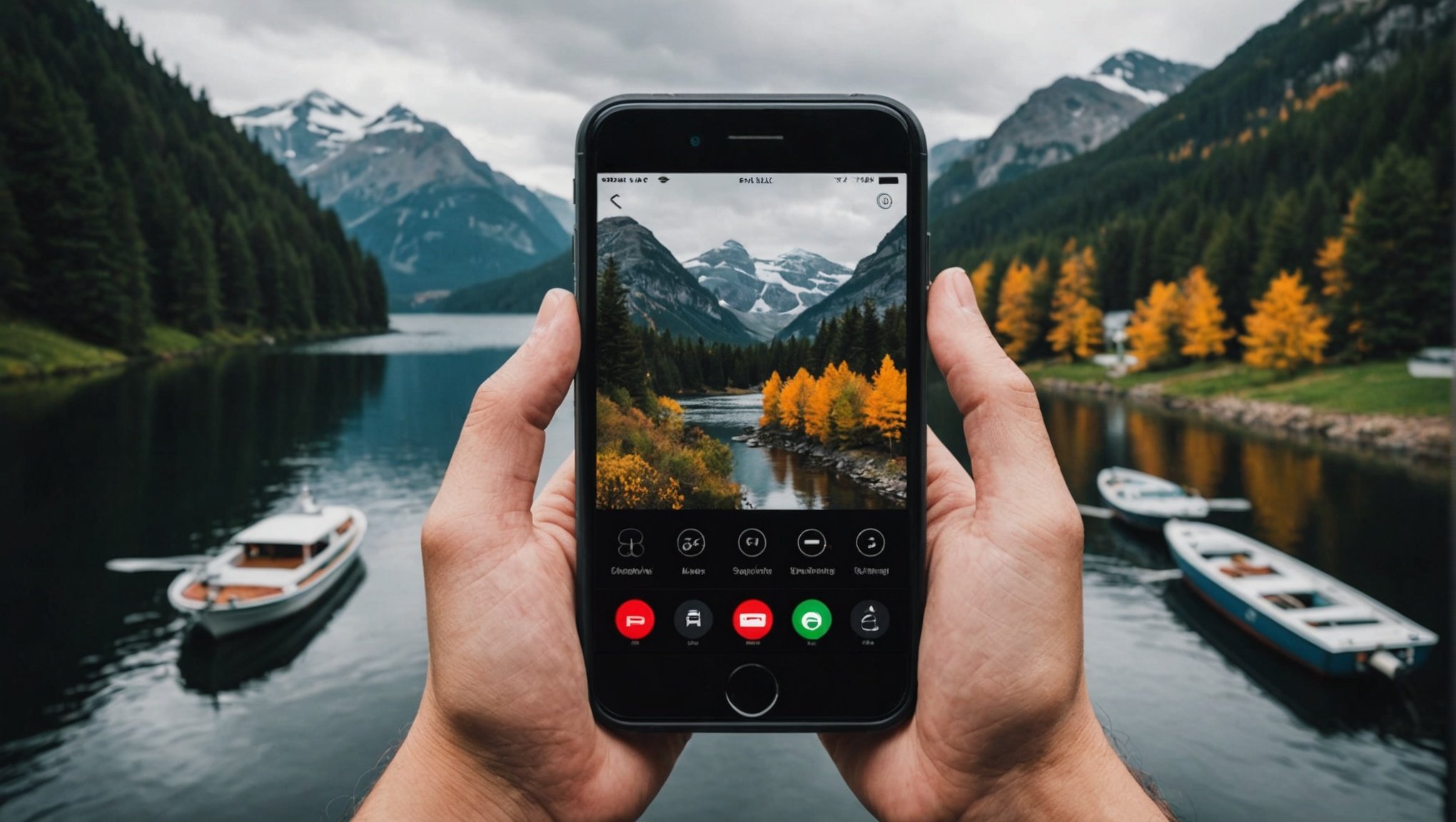Mobile photography has revolutionized how we capture life’s fleeting moments. With your smartphone, stunning images are just a tap away. Yet, many struggle to unlock their device's full potential. This guide offers practical strategies, from composition to lighting, to elevate your skills. Whether you’re a beginner or looking to refine your technique, these insights will empower you to create captivating photographs that truly resonate. Get ready to transform your mobile photography journey!
Understanding the Basics of Mobile Photography
Mobile photography has transformed the way we capture moments, thanks to the impressive features of smartphone cameras. Smartphone camera features such as high-resolution sensors, various lens options, and advanced software enhance the quality of images significantly. Understanding these features is crucial for any aspiring mobile photographer.
Also read : Unlocking Smart Home Control: Harness Your Smartphone for Voice-Activated Appliance Management
A key aspect of mastering mobile photography is the knowledge of camera settings. Adjusting settings like exposure, focus, and white balance can dramatically improve photo quality. Exposure determines how much light reaches the camera sensor; too much or too little can ruin an image. Focus ensures that the subject is sharp, while background blur can add depth. White balance corrects colour tones, making whites appear true to life.
To delve deeper, consider these essential concepts:
Have you seen this : Transform Your Space: Leverage Your Smartphone to Design an Intelligent Home Workout Zone
- Exposure: Adjust for proper lighting, avoiding overexposure or underexposure.
- Focus: Tap to focus on your subject for clarity.
- White Balance: Choose settings that match the lighting conditions to maintain colour accuracy.
By understanding these fundamentals, you can harness your smartphone's capabilities to take stunning photos, regardless of the environment or lighting conditions.
Mastering Lighting Techniques
In mobile photography, understanding lighting is pivotal. The choice between natural and artificial lighting can significantly impact your images. Natural light provides a soft, authentic feel, ideal for capturing vibrant colours and details. However, it varies throughout the day, affecting your photographs.
Natural vs. Artificial Lighting
Natural lighting is abundant, but it requires careful timing. The golden hour, shortly after sunrise or before sunset, offers warm, diffused light, perfect for outdoor photography. Conversely, midday sun can be harsh, causing unwanted shadows. Artificial lighting, such as LED lights, offers control and consistency, allowing you to manipulate shadows and highlights.
Best Times of Day for Outdoor Photography
The best times for outdoor photography are during the golden hour. This period provides softer, flattering light, reducing harsh contrasts. Overcast days also offer even lighting, eliminating harsh shadows and enhancing details.
Utilizing Reflectors and Diffusers
Reflectors and diffusers are essential tools for managing light. A reflector bounces light onto your subject, filling in shadows and adding dimension. Meanwhile, a diffuser softens harsh light, creating a more even illumination. By mastering these techniques, you can elevate your mobile photography, capturing stunning images in any lighting condition.
Composition Strategies for Stunning Photos
In mobile photography, mastering composition can transform ordinary shots into extraordinary ones. A fundamental technique is the rule of thirds, which involves dividing the frame into nine equal sections using two horizontal and two vertical lines. Positioning your subject along these lines or at their intersections creates balance and interest.
Leading lines guide the viewer's eye through the image, adding depth and drawing attention to the focal point. They can be anything from roads and rivers to architectural elements.
Framing is another powerful tool. By using elements like windows, doorways, or branches, you can create a natural frame around your subject, adding context and focus. Similarly, symmetry can produce visually pleasing and harmonious images. Look for reflections or balanced scenes to achieve this effect.
Exploring creative angles and perspectives can also yield unique shots. Try shooting from a low angle to give a sense of grandeur or from a high vantage point for a broader view. Experimenting with different perspectives can reveal unexpected details and compositions, enriching your mobile photography repertoire.
Editing Your Photos Like a Pro
Editing can elevate your mobile photography to new heights. With the right mobile photo editing apps, you can refine your images to achieve professional results.
Recommended Editing Apps
Choosing the right app is crucial. Popular choices include Adobe Lightroom and Snapseed. These apps offer comprehensive tools for both basic and advanced editing, allowing you to fine-tune every aspect of your photos.
Basic Editing Techniques
Start with fundamental adjustments. Cropping helps improve composition by removing distracting elements. Brightness and contrast adjustments can enhance visibility and depth. Use the sharpness tool to bring out details, ensuring clarity in your images.
Advanced Editing Tips
For those seeking more, delve into advanced techniques. Color correction is vital for achieving accurate tones; adjust saturation and hue to make colours pop. Filters and presets can provide a consistent look across your photos, but use them sparingly to maintain originality. Explore tools like healing brushes to remove unwanted blemishes, ensuring your subject stands out. By mastering these mobile editing techniques, you can transform ordinary photos into extraordinary works of art.
Techniques for Specific Photography Scenarios
Exploring various mobile photography techniques can enhance your ability to capture diverse scenarios effectively. Whether you're shooting landscapes, portraits, or night scenes, understanding specific techniques is essential for achieving stunning results.
Landscape Photography Tips and Tricks
To capture breathtaking landscapes, focus on the rule of thirds to create balanced compositions. Use the panorama mode to capture expansive views, ensuring all elements fit within the frame. Consider using leading lines like paths or rivers to guide the viewer's eye through the image, adding depth and interest.
Capturing Stunning Portraits with Smartphones
For portraits, ensure your subject is well-lit and consider using portrait mode to achieve a blurred background, which highlights the subject. Pay attention to focus and exposure settings to ensure clarity and detail. Experiment with angles and perspectives to find the most flattering view, and use natural light to create soft, appealing tones.
Night Photography and Low-Light Techniques
When shooting in low-light conditions, stabilize your smartphone to prevent blurriness. Utilize night mode if available, which enhances detail and reduces noise. Adjust the ISO and exposure settings to capture more light, but be cautious to avoid overexposure. Embrace artificial light sources, like streetlights, to add mood and atmosphere to your night shots.
Recommended Accessories for Mobile Photography
Enhancing your mobile photography experience often requires the right mobile photography gear. Essential accessories can significantly improve the quality of your images and expand your creative possibilities.
Essential Gear for Enhancing Your Shots
-
Tripods: Stability is key for clear, sharp images, especially in low-light situations. A compact, lightweight tripod can prevent blurriness and allow for creative long-exposure shots.
-
Lenses: Attachable lenses, such as wide-angle, macro, or telephoto, can provide versatility in capturing different perspectives. These lenses can transform your smartphone into a more powerful photographic tool.
-
Lighting: Portable LED lights can help manage lighting in challenging conditions, offering consistent illumination and enhancing detail.
Choosing the Right Gear for Your Needs
When selecting accessories, consider your photography style and the environments you typically shoot in. For instance, if you enjoy landscape photography, a wide-angle lens and sturdy tripod are invaluable. If you frequently shoot portraits, consider a lens that enhances depth of field. Prioritise accessories that complement your creative vision and fit within your budget. By investing in the right mobile photography gear, you can elevate your photography and capture stunning images with ease.











